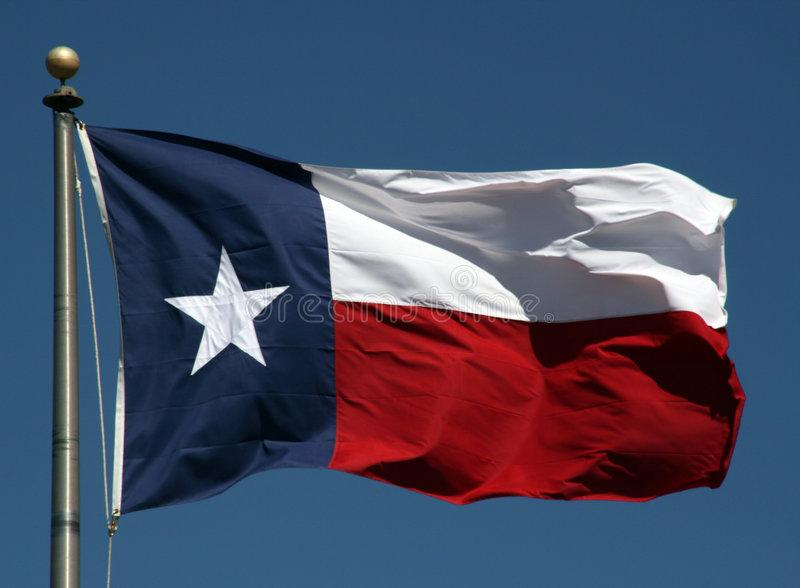How Well Does Texas’s “Operation Lone Star” Work? Ask Arizona
Two border stories are trending in the news: an administration lawsuit against Texas over a floating buoy barrier the state has installed in the Rio Grande; and a decline in illegal alien apprehensions in June. Overlooked is that the two stories are inextricably linked, as the barrier is part of “Operation Lone Star”, a larger Texas effort to deter illegal entrants. How well does Lone Star work? Just compare results in Texas’ five Border Patrol sectors to those in Arizona’s Tucson sector, which has bucked the larger Southwest border trend, and where apprehensions are on the rise. Or simply consider how much the Biden administration hates it.
Three Views of the Southwest Border, Four Years Apart
In August 2017, I travelled through Texas to the Southwest border, and drove from the Rio Grande Valley (RGV) 350 miles all the way up the banks of the river to the city of Del Rio.
It wasn’t my first border trip (I’d been going there since my Hill staffer days), but still I was struck by an interesting phenomenon – Border Patrol agents and their distinctive white and green vehicles were everywhere, at highway checkpoints, on the roads and streets, and all along the river.
When you looked at the “emergency number” lists (fire, ambulance, police, etc.), “Border Patrol” was at the top of each, because in isolated towns, they were the “first responders”. Cops are few and far between, I’m not sure I ever saw an EMS vehicle, and major cities aside, there were few troopers.
When I went to Laredo, Texas, in January 2020, I noted that there were too few agents and not enough infrastructure (the only fence I saw was decorative, to keep trespassers off a college campus), but I was not quite ready for the scene that greeted me when I returned back to the RGV and Del Rio in August 2021.
By then, Joe Biden had replaced Donald Trump, and the new president quickly reversed the successful policies implemented by his predecessor that brought a modicum of security to the Southwest border. In place of those policies, Biden started releasing nearly every illegal entrant DHS didn’t expel under Title 42.
There were fewer than 17,000 Border Patrol agents along the 1,954-mile Southwest border at the end of FY 2020, and by FY 2021, they were dealing with nearly 4.5 times as many illegal migrants than in FY 2017. Worse, those agents had to feed, transport, process, and care for nearly five times as many aliens entering illegally with children in “family units” (FMUs) and 2.5 times as many unaccompanied alien children (UACs) than they had just four years before.
FMUs and UACs are the most vulnerable and needy border migrants, and consequently require more care than the single adults who made up the majority (61.5 percent) of the illegal entrants agents apprehended in FY 2017.
As a result, increasing numbers of Border Patrol agents were pulled “off the line” and sent to either care for those families and children on site or to transport, process, and care for them in makeshift “processing centers” away from the border. That meant they weren’t in the border-adjacent communities anymore, weren’t on the roads and highways, and (worse) weren’t along the Rio Grande.
That, in turn, meant that those agents weren’t there to stop the drug smugglers, or the human traffickers, or the aliens who had no intention of being caught, those last known as “got aways”, i.e., illegal entrants who were detected but successfully evaded apprehension and made their way into the interior.
In FY 2017, there were fewer than 104,300 got aways at the Southwest border. Not surprisingly, that number rose nearly fourfold to more than 389,500 in FY 2021, and only increased from there – to nearly 600,000 in FY 2022.
“Operation Lone Star”
To fill the law-enforcement void created when those Border Patrol agents were pulled off the line, Texas Gov. Greg Abbott (R) launched “Operation Lone Star” in March 2021. As my colleague, Todd Bensman, explained shortly thereafter, the nascent stages of that operation “doubled the state’s law enforcement presence in” the RGV sector.
During my August 2021 trip to Del Rio, I was embedded with Texas Department of Public Safety (DPS) troopers, both on the highway between the river and 40-plus miles into the interior at Uvalde, and in the air over the U.S.-side of the region. I was exhausted after a couple of shifts. They had to do it day-in and day-out for weeks on end, hundreds of miles from their homes and families in the heart of Texas.
Border Patrol white-and-green Ford Explorers were replaced by DPS’ trademark black Explorers with white accents, and the work they did was and is indispensable – chasing dopers, tracking smugglers in the south Texas scrub, and protecting livestock and property from both.
The river barriers are simply the latest manifestation of Texas’s border-control efforts.
Things have only ramped up from there. Biden “paused” (read: “called off”) all border infrastructure within hours of taking office, so Texas scrounged up fence panels and started doing the job in high-traffic areas near Rio Grande City; the latest state budget includes more than $4 billion for border security.
That all pales, however, in comparison to what DPS and the state National Guard started doing to prepare for the end of Title 42 on May 11. On May 10, I went to the river in El Paso, and saw miles upon miles of accordion wire the state had erected along the banks to deter cross-border traffic in the wildly unpredictable waters of the Rio Grande, backed by rows of Humvees and squad cars.
Most would-be illegal migrants there took the hint. Meanwhile Bensman was on the other side of Texas, reporting on the scene from the south side of the line in the RGV Mexican border towns of Matamoros and Reynosa. While the state effort on the U.S. side was similar in the far eastern RGV to what it was doing in far western El Paso, the migrants’ response south of the river was very different.
DPS and National Guard on the north bank there had to repeatedly fend off waves of migrants who were expecting a more welcoming reception. And so, the migrants fell back.
The river barriers are simply the latest manifestation of Texas’ “Lone Star” efforts, and the buoys on which the administration has decided to die to advance its policy of not deterring illegal entries over the Southwest border.
Personally, I think Biden’s challenge is likely to become the most ill-considered prosecution since the “Trial of the Chicago 7”, in that it offers Abbott a national stage on which to play the role of Abbie Hoffman in flipping the spotlight back on the administration.
Vice President Harris at the UnidosUS Conference
If you want to know how successful Texas’ border efforts have been, consider the following remarks Vice President Kamala Harris delivered at the 2023 Annual Conference of the “Latino” advocacy group, UnidosUS (the euphemistic new name for the National Council of La Raza), in Chicago on July 24:
Across our nation, extremist so-called leaders demonize, target, and attack immigrants.
. . . .
In Texas, we see reports that authorities have pushed children and pregnant women who crossed the Rio Grande back into the river; people who refuse to provide water to other human beings who are in deadly 100-degree heat. Inhumane, outrageous, and un-American.
There’s a lot to unpack there but I’ll start by questioning the VP’s assertions that Texas officers have denied water to thirsty migrants. There have been “reports” that Harris herself is in charge of addressing the “root causes” purportedly driving those migrants to the Southwest border, but thus far little proof of their causes or reactions. I take the water rumors with an even larger grain of salt.
“Divorced from Reality”
In that vein and more seriously, Harris’ statements ignore and abjure any responsibility that she or her boss have for those migrants’ arrival in the United States to begin with. As Vice President, she is the second most powerful person in what we used to call the “Free World” – more powerful than Abbott and certainly possessing greater agency than all the troops and troopers she condemned.
Harris, and the administration she was flacking for in Chicago, act as if illegal migration at the Southwest border is a force of nature, like gravity and heliocentrism, driven by factors untouchable by America’s reach or influence in God-cursed cesspools of poverty, corruption, crime, hunger, and despair.
Note that when then-President Trump (famously but only allegedly) referred to certain of those nations as “sh**hole” countries”, he was widely excoriated for it, and rightly so for any number of reasons. I know people from most of them, and they usually say I’d be missing out if I failed to visit.
Similar assessments, bowdlerized for public consumption are, however, driving Biden’s migrant policy. When you hear high-ranking DHS officials state – dispositively and under oath – that “Hemispheric conditions are driving encounter levels that strain DHS resources”, they’re simply channeling their inner Trump.
And of course, those assessments are largely wrong, but you don’t have to trust me. Here’s what U.S. district court Judge T. Kent Wetherell II concluded in March after hearing more than a year of testimony and argument and plowing through reams of documents in Florida v. U.S., a case in which the state of Florida challenged Biden’s border release policies:
[T]he evidence establishes that [DHS has] effectively turned the Southwest Border into a meaningless line in the sand and little more than a speedbump for aliens flooding into the country by prioritizing “alternatives to detention” over actual detention and by releasing more than a million aliens into the country—on “parole” or pursuant to the exercise of “prosecutorial discretion” under a wholly inapplicable statute—without even initiating removal proceedings.
. . . .
There were undoubtedly geopolitical and other factors that contributed to the surge of aliens at the Southwest Border, but [the administration’s] position that the crisis at the border is not largely of their own making because of their more lenient detention policies is divorced from reality and belied by the evidence.
From the River to the Sonoran Desert
Simply put, the state of Texas is just trying to do what DHS is required by law to do: deny entry to illegal migrants. And in my considered and expert estimation, Operation Lone Star is currently at least as, if not more, responsible for the current (and much vaunted) decline in illegal entries of late as anything the Biden administration has haphazardly cooked up.
Which carries me, at last, from the riparian international boundary in Texas to the Sonoran Desert, and specifically to the 262 miles of the Southwest border that fall under the jurisdiction of the Tucson sector of the Border Patrol.
In June, agents from the five Texas Border Patrol sectors (RGV, Laredo, Del Rio, Big Bend, and El Paso) – collectively responsible for 1,486 miles of the Southwest border along the Rio Grande and into New Mexico – apprehended a total of 51,630 illegal migrants. In the same month in 2022, they caught 128,425 illicit border crossers, a 60-percent year-over-year decline.
Meanwhile, agents in Tucson sector apprehended 24,360 illegal migrants – nearly half as many as in the Texas sectors in an area of jurisdiction less than a fifth as large. It’s also nearly 15 percent more apprehensions than Tucson sector agents made in June 2022 (21,270).
Texas’s efforts are at least as, if not more, responsible for the current decline in illegal entries as anything the Biden DHS has haphazardly cooked up.
All other things being equal, none of this makes sense. Tucson is farther from Central America than the three easternmost Texas sectors (RGV, Laredo, and Del Rio), the desert there is much less hospitable during the summer than even swampy south Texas, Tucson sector has more agents than any other, and the sector is nowhere near any major population center in Mexico.
With respect to staffing, at the end of FY 2020, there were 3,119 agents in RGV sector patrolling 320 miles of the Rio Grande (not counting 250 miles of coast), or 9.75 agents per mile. At that same point, Tucson sector had a cadre of more than 3,600 agents, or 13.8 agents per mile, a staffing differential of 41.5 percent in Tucson’s favor.
As for population centers, El Paso sits directly across the river from Juarez, the sixth largest city in Mexico, with a population of 1.5 million. Laredo’s sister city, Nuevo Laredo, is home to more than 425,000, and Matamoros – a Mexican RGV border town right across from Brownsville – has nearly 542,000 residents.
The only city of any note on the Mexican side of Tucson sector is Nogales, Sonora, with a population of fewer than 265,000, and the biggest towns are Agua Prieta (population 92,000) and Naco (population 5,774). You can go there yourself and see, but trust me – each is an isolated desert outpost hours from any other population center in the interior of Mexico.
The Biden administration would have you believe its most recent asylum policies (just enjoined, but after reporting on the June numbers) are driving migrants from entering illegally between the ports to entering through them (equally illegally, a point it elides). If that were true, why would more aliens be heading farther inland to an hostile desert in the middle of nowhere to cross into the arms of even more agents?
“All Other Things” Aren’t Equal at the Southwest Border, so “Tucson Here They Come”
Of course, “all other things” aren’t equal at the Southwest border; Arizona has no scheme (“Operation Grand Canyon”?) equivalent to Operation Lone Star. Although she has suggested that she may expand her National Guard presence at the line, Arizona Gov. Katie Hobbs (D) is more interested in providing humanitarian assistance to deal with post-Title 42 migrant influxes than in deterring those migrants from entering to begin with.
The people calling the border shots in the Biden administration largely agree with Donald Trump’s scatological view of much of the rest of the world.
And so, Tucson sector, here they come.
Again, Operation Lone Star has been in place for nearly two-and-a-half years, but unless you live in Texas or read what Bensman and I have written about it, it likely was news to you before the administration started suing over the border buoys or the VP started riling up friendly crowds with allegations about how it works.
So, why is the administration poking the Texas longhorn now?
They’re not saying, but the only reasonable conclusion is that it’s because Operation Lone Star works, especially in its most recent iteration, and is frustrating the administration’s expressed interest in ensuring that any foreign national can come to the United States and apply for asylum (regardless of how that person gets here) and its fervent belief that U.S. immigration laws are inherently “inequitable” and a shameful (and vestigial, if it has its way) relic of the darkest days in the Republic’s past.
Of course, aliens can apply for asylum in any Western Hemisphere country, with the sole and isolated exceptions of Cuba (an island) and Guyana (an remote coastal enclave), which are not signatories to the UN refugee treaties. So, if asylum is the administration’s goal, why doesn’t it expect aliens, with only limited (and now enjoined) exceptions, to apply elsewhere?
Because, when you get right down to it, the people calling the border shots in the Biden administration largely agree with Donald Trump’s scatological view of much of the rest of the world. Their view is that you can’t expect anyone to seek protection in those countries, because – basically – those countries aren’t fit for human habitation. If that sounds inherently contradictory and hypocritical – it is.
If you want to know how well Texas’s Operation Lone Star works in deterring illegal migrants from crossing the Rio Grande, just compare the decrease in apprehensions in that state’s five Border Patrol sectors to the increase in Arizona’s Tucson sector. Or better yet, just consider how strongly and vitriolically the Biden White House is attacking it. If Lone Star wasn’t keeping illegal migrants out, Biden wouldn’t care.






